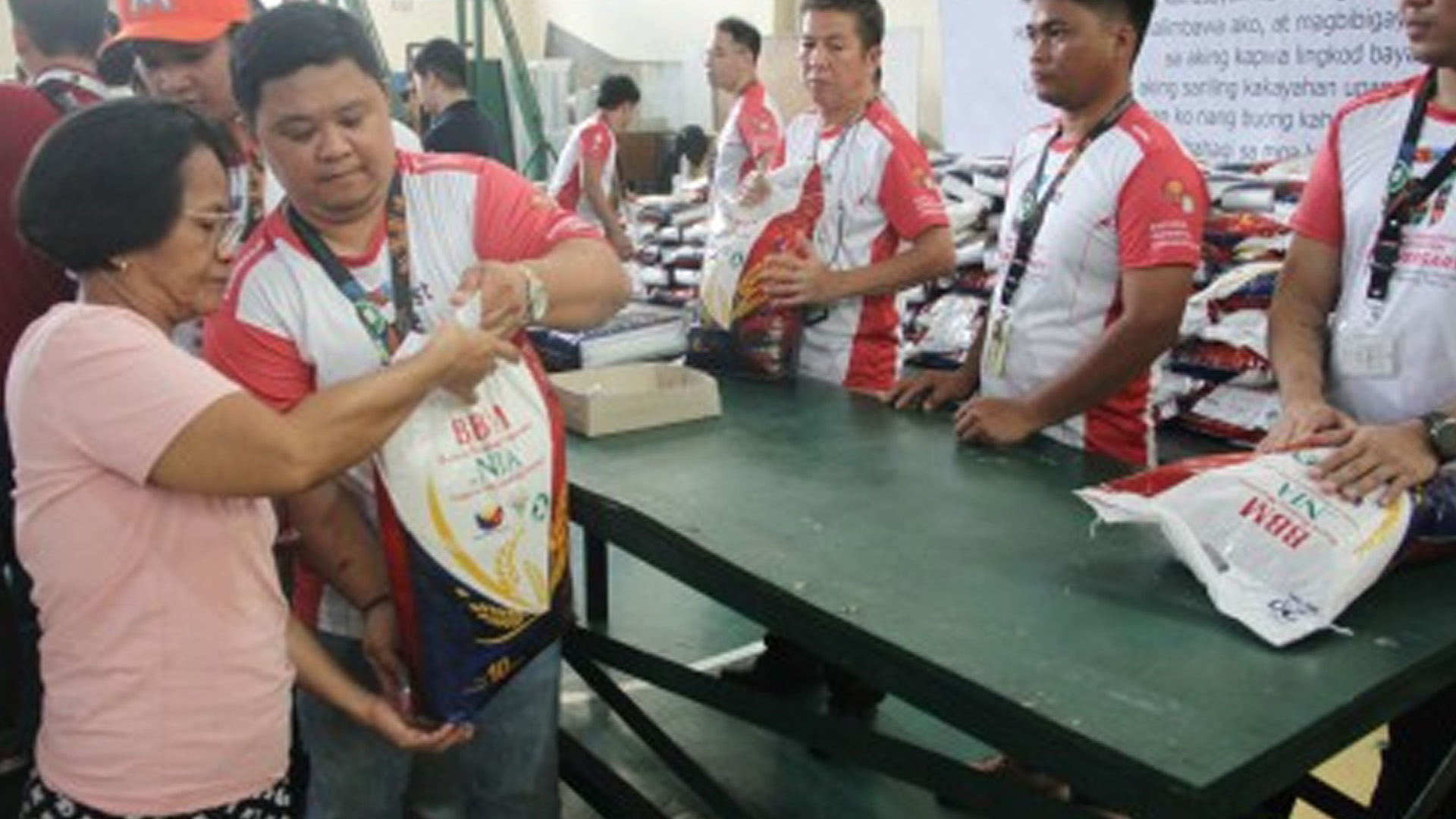The National Irrigation Administration (NIA) on Thursday assured the sustainability of the contract growing program as it launched the sale of PHP29 per kilogram of rice in its Kadiwa site at the NIA Central Office in Quezon City.
This is the first in Metro Manila following its initial sale in “Kadiwa sa NIA” sites in Central Luzon, Calabarzon, Mimaropa, and Caraga regions.
Under the contract growing program, farmers earn a higher income through lower production costs with the help of government support, including seeds, fertilizers, and mechanization.
Newly harvested and well-milled rice from irrigators associations contracted under the program is sold at PHP29 per kg. in select Kadiwa outlets, with priority to the vulnerable sectors, including members of the Pantawid Pamilyang Pilipino Program (4Ps), senior citizens, persons with disability (PWDs), and solo parents.
In an interview, NIA Administrator Eduardo Guillen said the program not only intends to provide cheaper rice to the public but also capacitate irrigators associations in producing higher yields and earning from the entire value chain in the long run.
“Ang gusto naman ng Pangulo (President Ferdinand R. Marcos Jr.) maging sustainable ito. Kaya ang gusto ng gobyerno, i-capacitate sila na mag-produce sa atin ng bigas (The President wants this to be sustainable. That’s why the government wants to capacitate them in producing rice for us),” he said.
Guillen said higher yields may be obtained by increasing the NIA’s irrigated lands’ cropping intensity to at least 2.5 from the current 1.6 cropping per year.
“Magsisimula na po kami nitong October, mararamdaman na po natin yung pagbabago ng production natin. Kasi ililipat na namin yung production natin from December, magtatanim na kami ng (We will start in October, we will feel the improvement in our production. Because we will reschedule our production for December, we will plant by) October,” he said, citing that a contract program “scale-up” may eventually capacitate farmers to sell rice through cooperatives.
Florida Amor, 69, a senior citizen, meanwhile, lauded the government’s program saying that a 10-kg sack of rice worth PHP290 or PHP29/kg is a huge help for their family.
“Kahit po umuulan, sumugod po ako papunta rito sa Kadiwa para bumili ako ng PHP29 isang kilo, kasi po namamasura lang ako hindi ko kaya ang mataas na bigas (Even though it’s raining, I went here in Kadiwa to buy the PHP29/kg rice because I’m just a garbage collector, I can’t afford expensive rice),” she said.
The program aims to supply around 100 million kilograms or equivalent to 10 million packs of 10 kg rice, in NIA’s Kadiwa sites, with surplus supply to be delivered in DA’s existing Kadiwa sites.
Subsidized farming
Meanwhile, Guillen cited the government’s subsidy to contract growing farmers in exchange for a five-ton harvest of wet palay (unhusked rice).
“Meron kami bibigyan ng kapital sa (We are giving capital in) input. Around PHP30,000 and then may cash din, may (there’s also a cash, there’s) PHP20,000 cash. And then, ibabalik ng mga farmers natin sa (the farmers will give the) NIA, five tons,” he said.
“Pagbalik nila ng five tons, magbibigay ulit ang NIA ng (When they give the five tons back, the NIA will again grant another) PHP50,000. So, all in all, PHP100,000,” he added.
Besides farm inputs and financial assistance, farmers’ cooperatives may also be given farm equipment, including rice processing systems.
Guillen said the NIA buys wet palay at PHP20/kg. farmgate price from contract growers, assuring adequate profit for farmers.
National Confederation of Irrigators Association President Remy Albano acknowledged there’s already a good income for contract growers with the said farmgate price.
“Ang puhunan lang namin yung effort namin, yung pag-trabaho, labor lang. Zero ang puhunan… Kikita kami kasi PHP20 na yun, wala na kaming gastos (Our effort, work, and labor are our only capital. Zero capital. And we already have an income in that PHP20, we don’t have an expense),” he said.
Guillen, meanwhile, said that farmers may even sell their harvest in excess of their five-ton-commitment to other traders at a higher price, posing additional income.
The NIA’s contract growing program’s initial implementation covered 40,000 hectares catering to roughly 40,000 farmers. (PNA)





